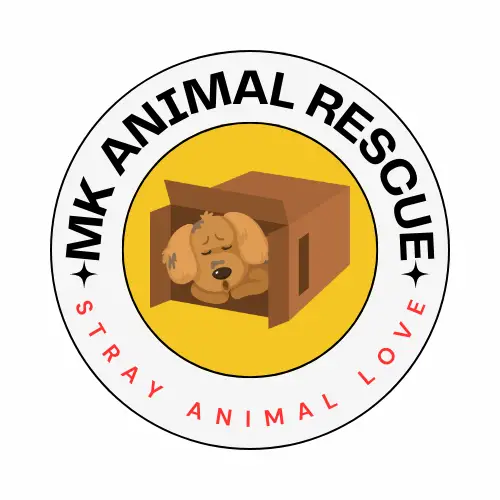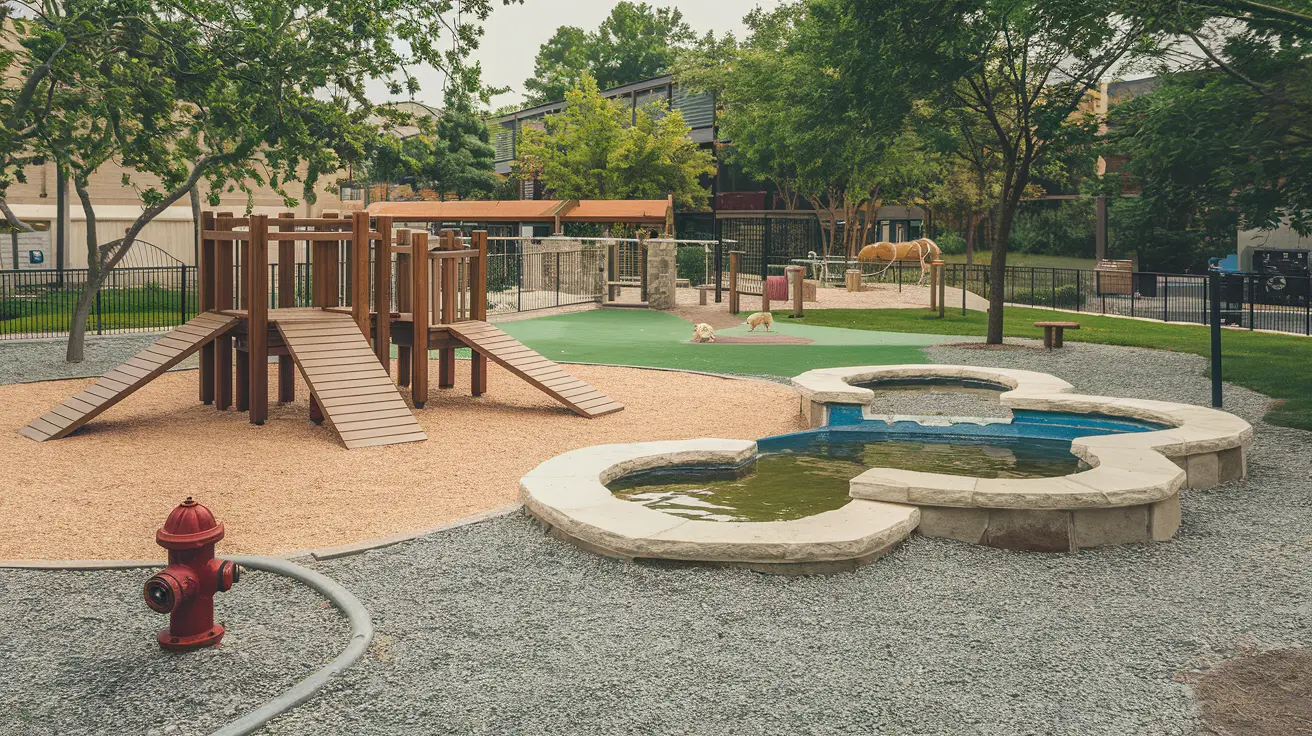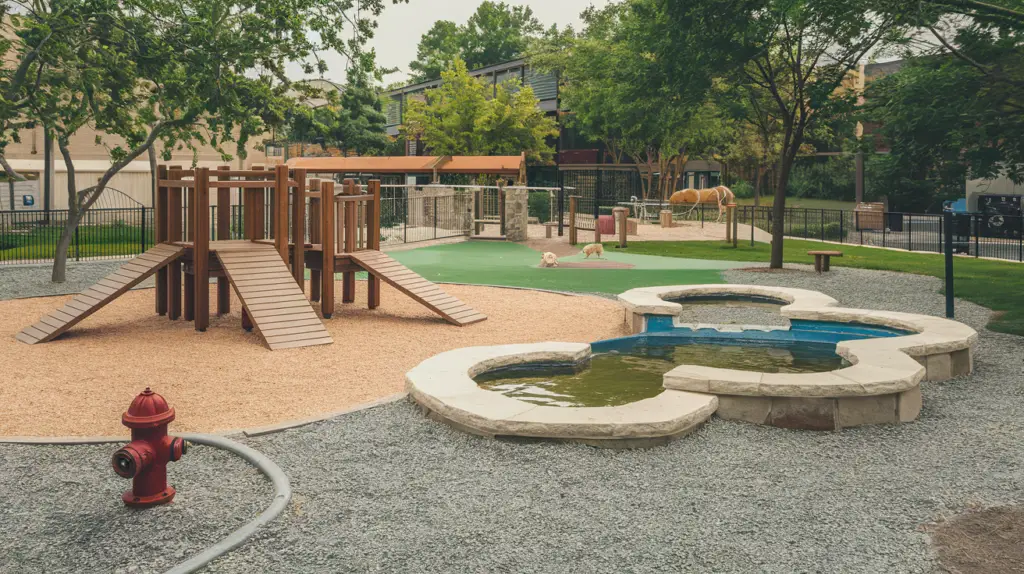
Dog parks are more than just a place for pets to run around—they’re community hubs that offer exercise, socialization, and mental stimulation for dogs and their owners. Designing a dog park involves blending functionality, safety, and aesthetics to create a space that caters to dogs of all sizes and temperaments. Whether you’re planning a public park or a private facility as part of a dog daycare, the possibilities are endless.
From agility courses to shaded relaxation areas, each design idea brings something unique to the table. With proper planning, a dog park can become a haven for furry friends and a delightful retreat for pet parents. Here are 10 inspiring dog park design ideas to help you create the ultimate dog-friendly space.
1. Agility Playgrounds for Active Dogs
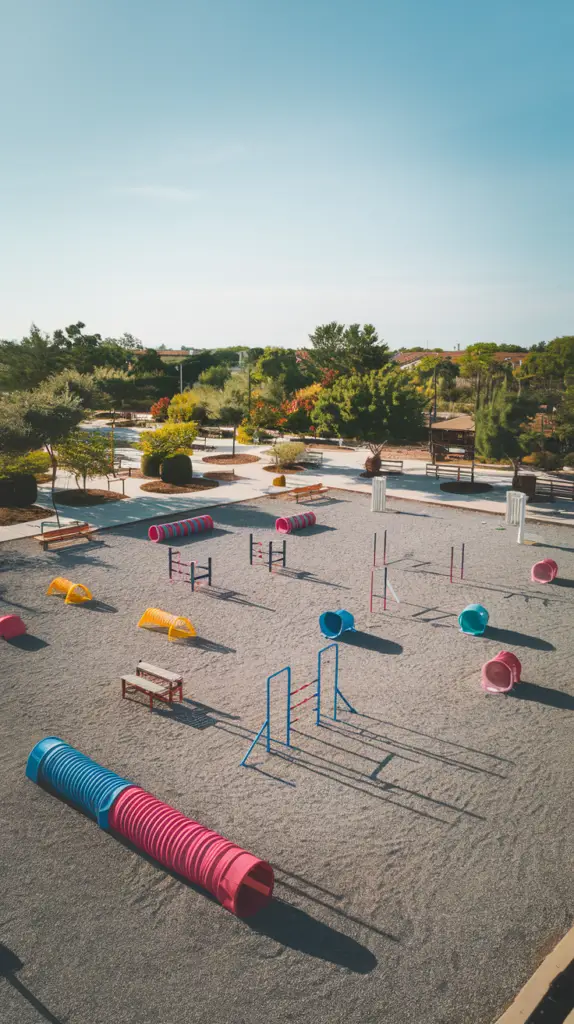
Agility equipment like tunnels, weave poles, and A-frames turns any dog park into an engaging play zone. Active dogs can burn off energy, while owners can enjoy watching their pets showcase their skills.
Use durable, weather-resistant materials for long-lasting equipment. Consider arranging the agility course in a circular or linear format to guide dogs seamlessly through the activities. Add signage with tips for proper use, creating a fun and educational space.
An agility-focused dog park not only keeps dogs healthy but also encourages bonding between pets and their owners as they navigate the course together.
2. Shaded Rest Areas for Relaxation
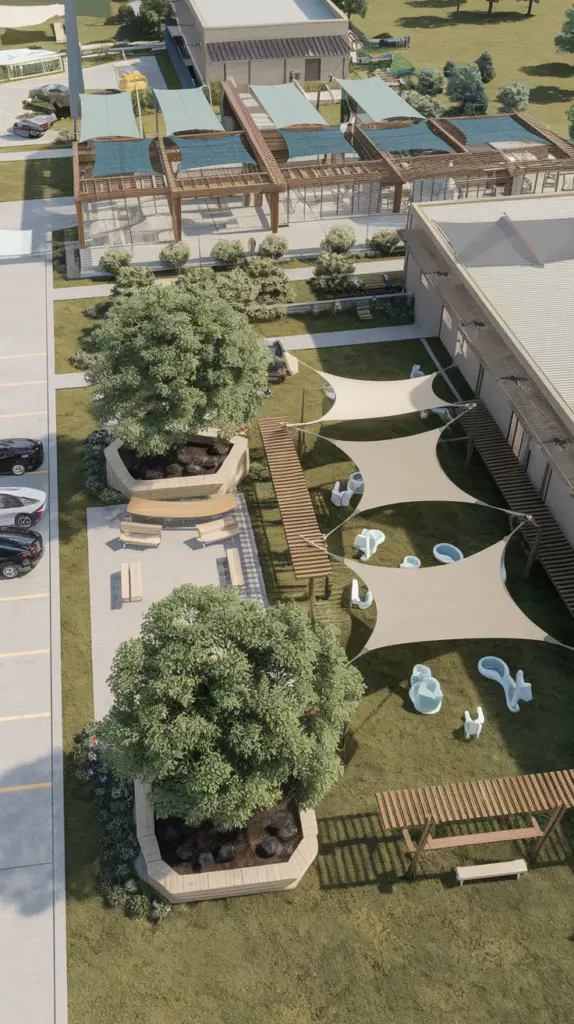
Shade is essential in dog parks, especially during hot days. Install pergolas, shade sails, or large trees to provide cooling spots where dogs and their owners can relax. Comfortable benches and dog-friendly water fountains enhance the experience.
Choose durable, low-maintenance materials like steel or treated wood for the structures. Include cooling mats or raised platforms to keep dogs comfortable. These areas can also serve as social hubs for owners to chat while their pets take a break.
Shaded rest areas are a simple yet effective way to ensure a pleasant experience for all visitors.
3. Interactive Water Play Zones
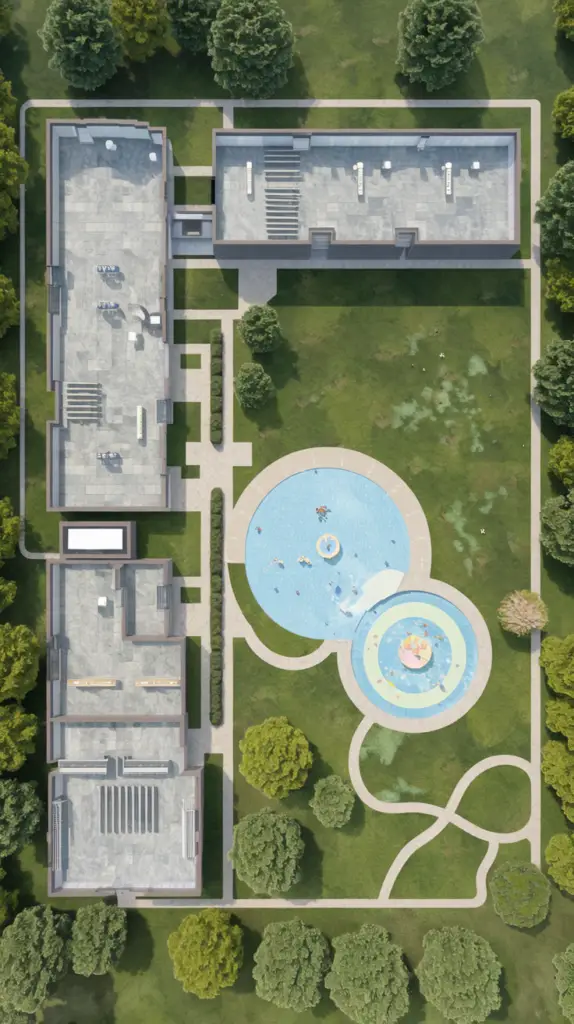
Water features like splash pads, fountains, and small pools are a hit with dogs who love to cool off and play in water. These zones add an exciting dynamic to any dog park.
Ensure the water features are dog-safe and easy to maintain. Use non-slip surfaces around the water area to prevent accidents. Include shallow sections for smaller dogs and deeper zones for larger breeds.
Interactive water zones are perfect for summer days and make your dog park a favorite destination for pups who love water.
4. Separate Play Areas for Small and Large Dogs
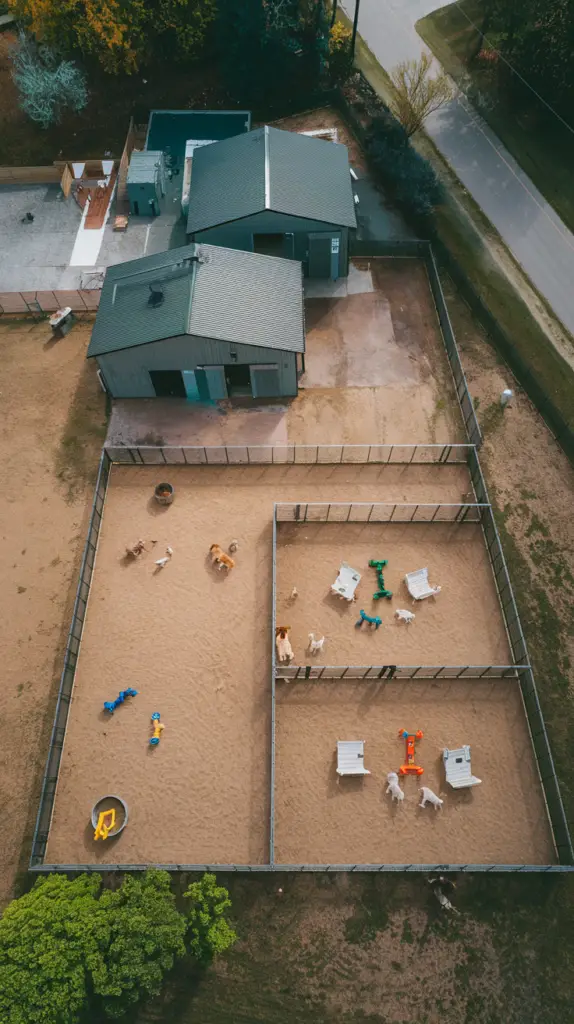
Safety is a priority in any dog park design. Create separate zones for small and large dogs to ensure everyone can play comfortably and securely.
Use clear signage to indicate each section, and include fences with secure latches. Design each area with appropriately sized equipment and obstacles, catering to the needs of different dog sizes.
Separating play areas minimizes the risk of accidents and helps dogs of all breeds and temperaments feel safe and included.
5. Natural Landscaping for a Rustic Feel
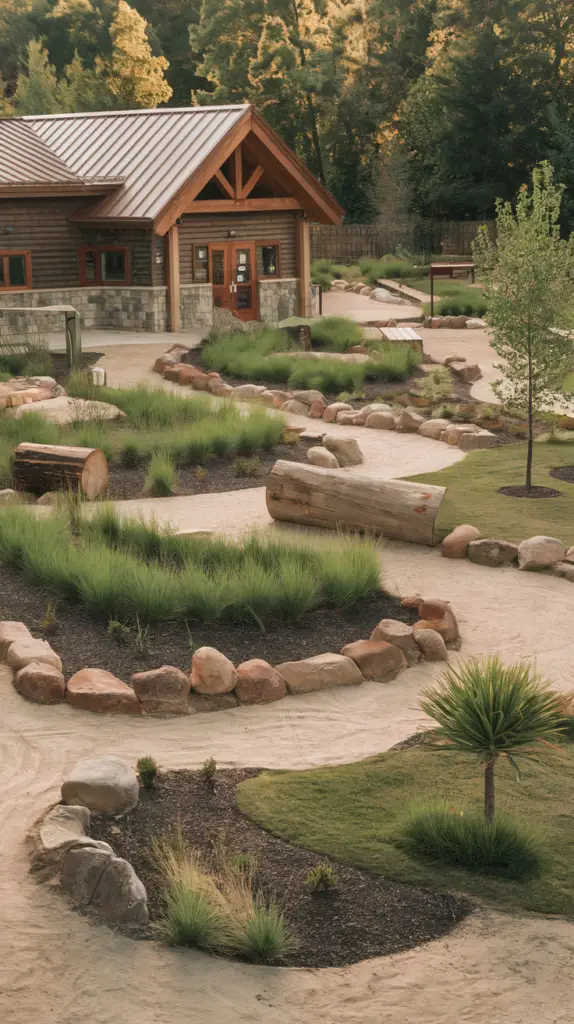
Incorporate natural elements like grassy mounds, logs, and boulders to create a rustic, organic vibe. This design appeals to dogs’ natural instincts while enhancing the park’s aesthetic.
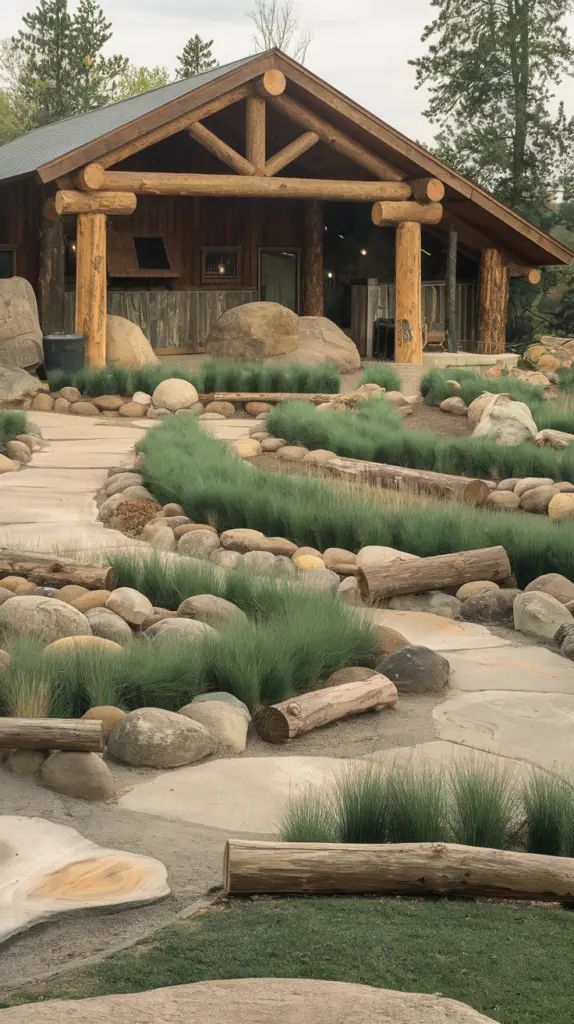
Use native plants and trees for low-maintenance landscaping. Add winding paths or trails for owners and dogs to explore together. Natural textures and scents make the park more engaging and relaxing for pets and their humans.
A rustic design brings a touch of the outdoors to urban areas and adds unique charm to the dog park.
6. Indoor Dog Park for All-Weather Fun
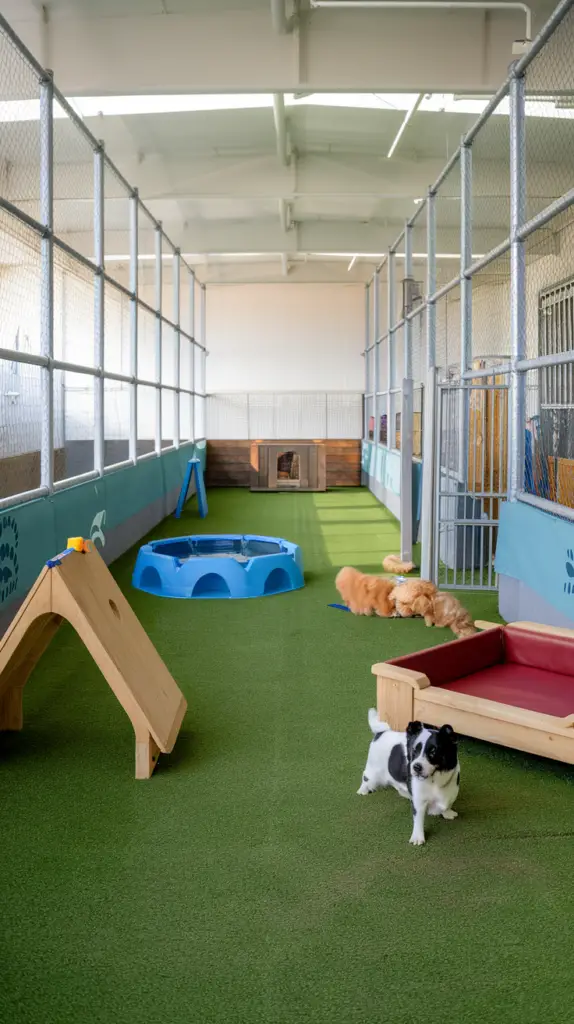
An indoor dog park is perfect for areas with extreme weather conditions. Use non-slip flooring, durable partitions, and adequate ventilation to create a safe and enjoyable space.
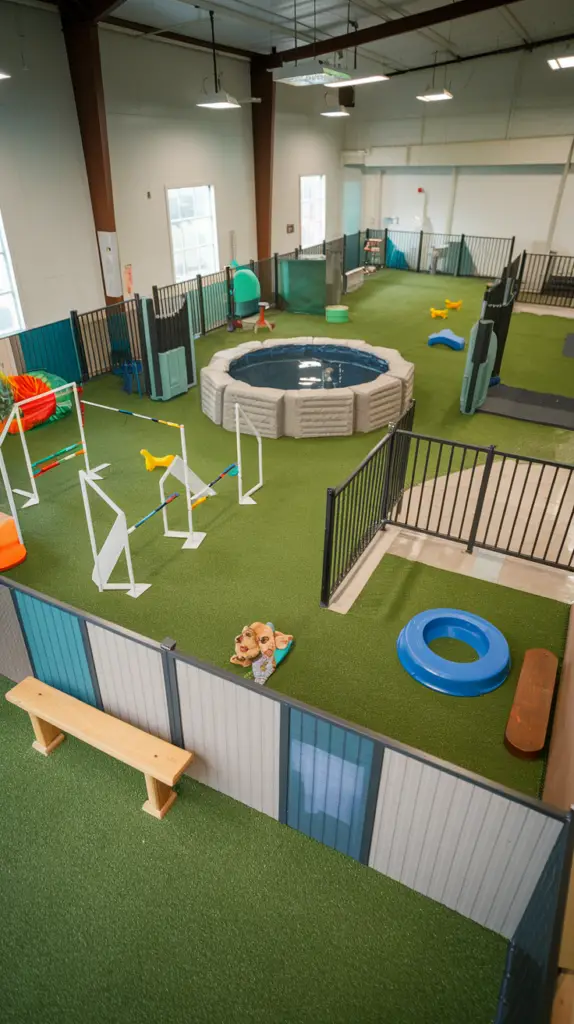
Incorporate agility equipment, a small pool, and cozy rest areas to keep the indoor park exciting. Add artificial grass or turf for a natural feel without the upkeep of real grass.
Indoor dog parks provide a year-round solution for exercise and play, making them a popular choice for pet resorts or urban facilities.
7. Social Spaces for Owners and Dogs
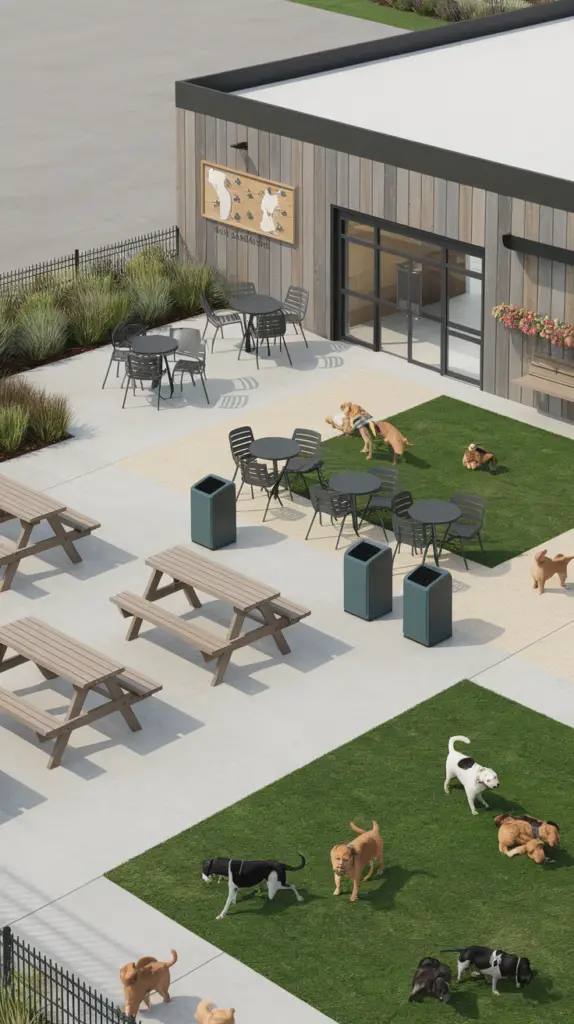
Encourage community interaction by including picnic tables, cafe-style seating, and communal areas where owners can relax and connect. Adding dog-friendly snacks or vending machines makes the experience even better.
Use durable outdoor furniture and place waste bins nearby for convenience. Consider adding a bulletin board for community announcements or dog-related events.
Social spaces make the park more than just a play area—it becomes a hub for pet lovers to meet and share experiences.
8. Obstacle Courses for Mental Stimulation
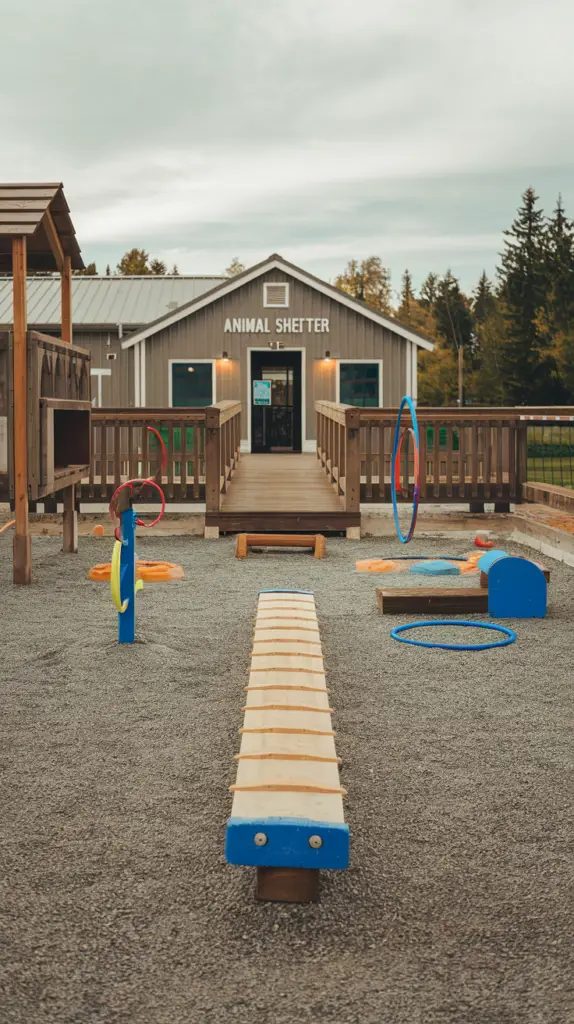
Obstacle courses challenge dogs mentally and physically, making them a great addition to any dog park. Include items like balance beams, jumping hoops, and sensory zones with different textures.
Rotate the obstacles periodically to keep the experience fresh and exciting. Provide instruction boards or QR codes with training tips to guide users.
Obstacle courses are a fantastic way to engage dogs while providing an interactive experience for their owners.
9. Eco-Friendly Park Designs
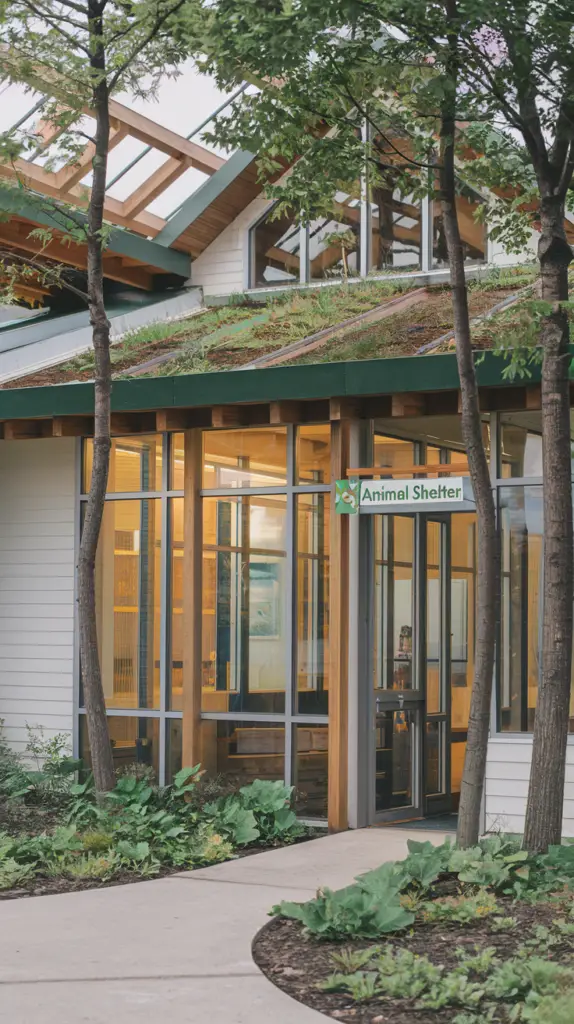
Sustainable features like solar lighting, rainwater collection systems, and recycled materials create an eco-friendly dog park.
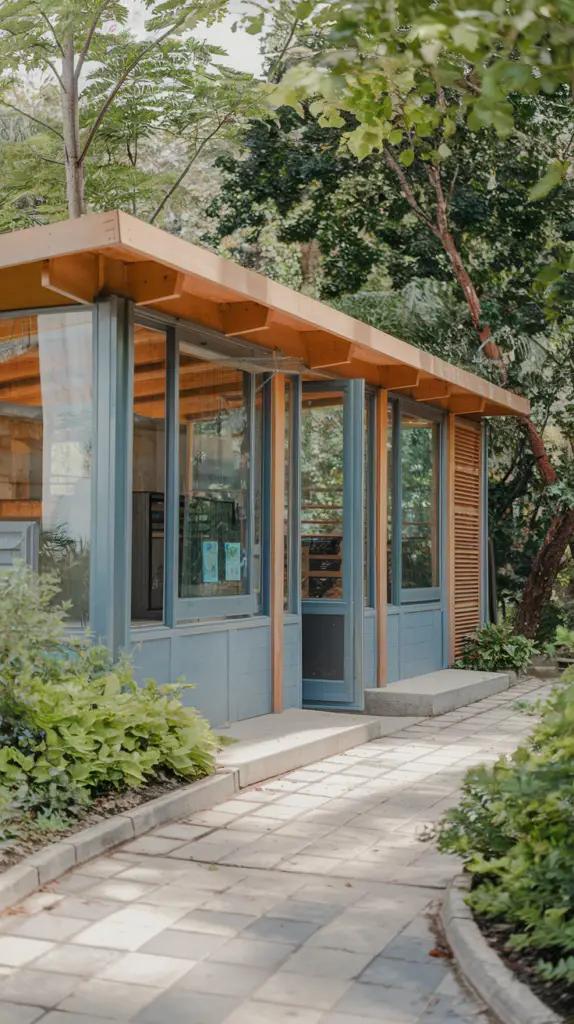
These elements not only benefit the environment but also attract environmentally conscious visitors.
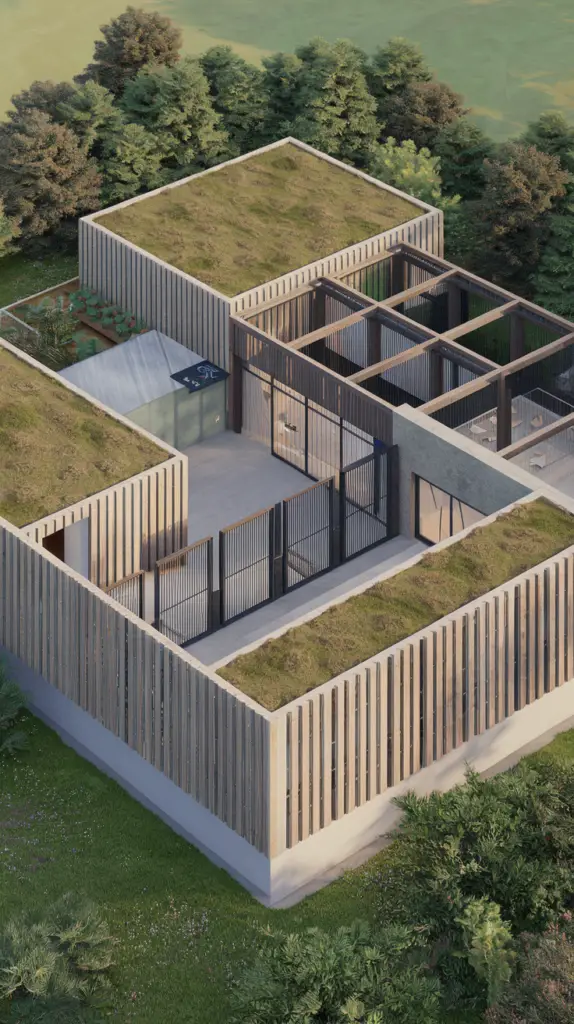
Use permeable surfaces for pathways to reduce water runoff, and plant drought-resistant vegetation. Include compostable waste bags and bins to promote green practices.
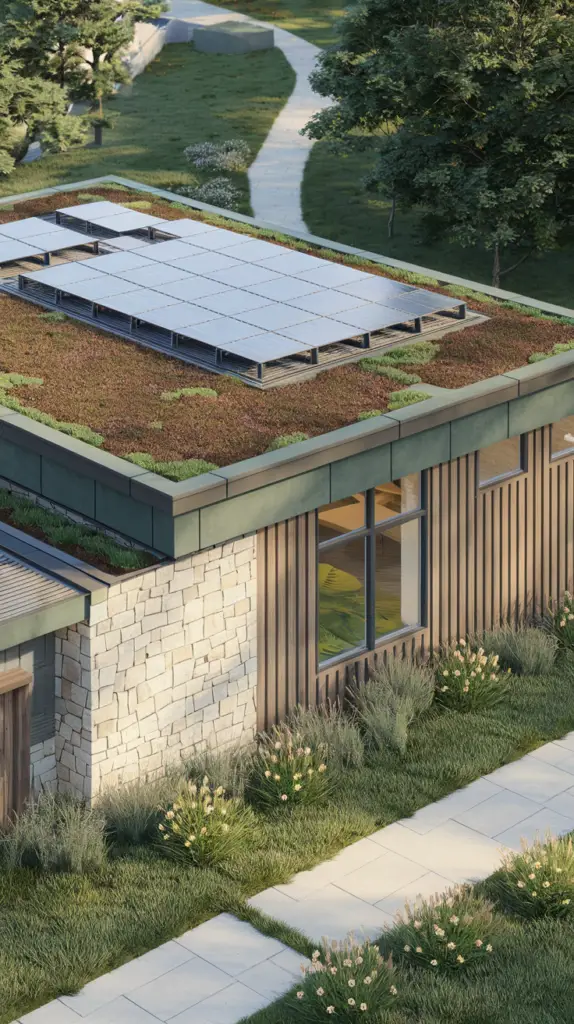
An eco-friendly design aligns with modern sustainability goals while offering a unique and responsible space for pets and their owners.
10. Pet Spa Zones
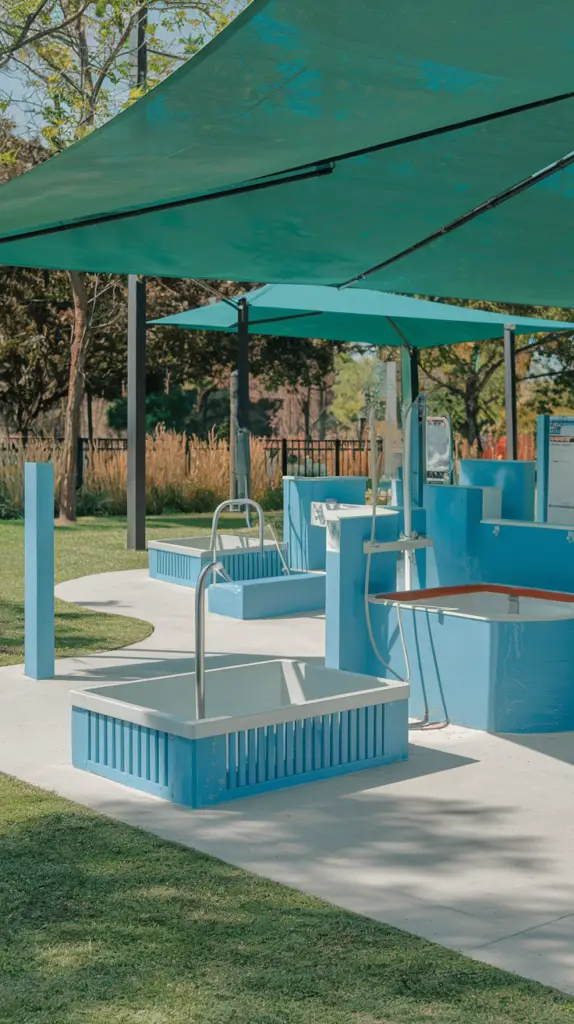
Elevate your dog park with a pet spa section featuring grooming stations, rinse-off areas, and massage zones. Add raised platforms for easy grooming and a dog-friendly drying station.
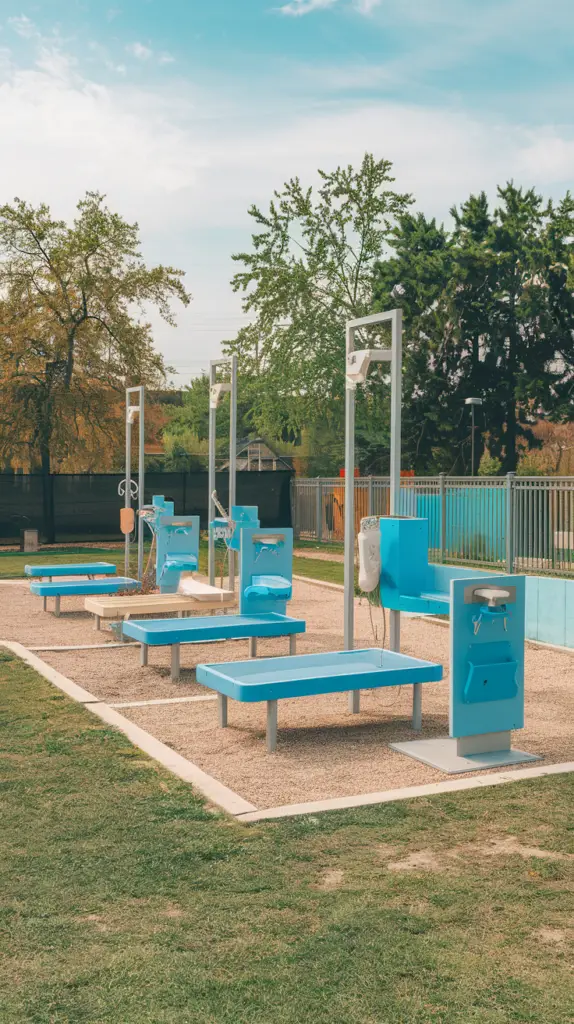
Use water-efficient fixtures and non-toxic cleaning products to maintain the spa. Offer shaded areas nearby for post-spa relaxation. A pet spa adds a touch of luxury and attracts dog owners looking for an all-in-one experience.
Final Thoughts
Designing a dog park goes beyond aesthetics—it’s about creating a safe, engaging, and enjoyable environment for dogs and their owners. From agility courses to shaded rest areas, these 10 ideas cater to a variety of needs and preferences. Whether you’re planning a community park or adding features to a pet resort, these designs ensure a memorable experience for everyone involved. Stay tuned for the Pinterest titles and descriptions to bring these concepts to life!
